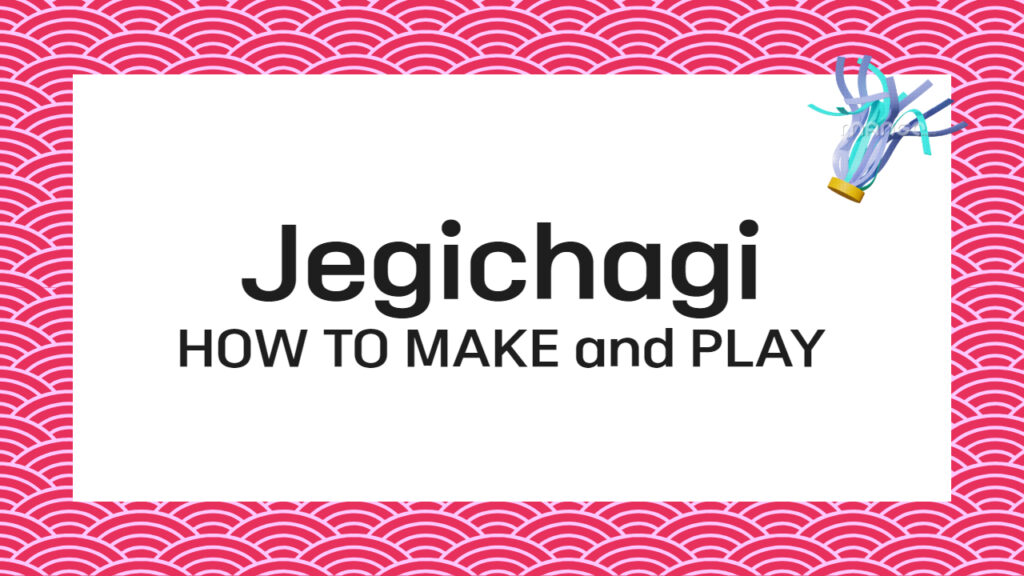
What is Jegichagi?
Jegichagi is a traditional Korean folk game where players kick a Jegi, a small, weighted object, with their feet. It is commonly enjoyed during winter and is practiced nationwide. Jegichagi is a physical activity that improves concentration and balance, and it can be played individually or in groups. This post will delve into the origins of Jegi Chagi, how to make a Jegi, and how to play the game.
Origins of Jegi Chagi
Jegi Chagi originated from a game called “Dyeagi” during the Joseon Dynasty, which was influenced by an ancient Chinese martial arts training game called “Chukguk.” Over time, it evolved into the Jegi Chagi we know today, becoming a beloved traditional folk game.
How to Make a Jegi
Materials you Need
- any paper or plastic bag
- any two coins
- String or yarn
- Rubber band
- Scissors
Steps to Make a Jegi
Here’s a step-by-step guide to making a Jegi using a plastic bag:
- Prepare Plastic Bag: Cut a square piece from an appropriately sized plastic bag.
- Fold Plastic Bag: Fold the square plastic bag in half.
- Prepare Coins: Tie two coins together with a string.
- Wrap Plastic Bag: Place the coins in the center of the plastic bag and roll it up tightly.
- Tie with String: Secure one end of the rolled plastic bag with a string.
- Secure with Rubber Band: Insert the coins into the closed end of the plastic bag and secure the opposite end with a rubber band to keep the coins in place.
- Add Stabilizers: If desired, use the remaining plastic bag to create stabilizers or decorations for your Jegi. This can help improve its aerodynamics or add a fun touch to the game.
How to Play Jegi Chagi
Common Jegi Chagi Game Rules
- Prepare the Jegi: Hold the Jegi by the string.
- Start Kicking: Toss the Jegi into the air and kick it with your foot.
- Continuous Kicking: Keep kicking the Jegi to keep it airborne.
- Scorekeeping: Count how many times you can kick the Jegi consecutively.
- Competition: Play alone to set records or compete with others.
Other Jegi Chagi Game Rules
Jegi Chagi has been expanded with various rules. For example, players kick the Jegi with both feet alternately and score by counting how many times they can continuously retrieve it. Another variation involves playing rock-paper-scissors; the loser tosses the Jegi to the winner, who then kicks it as far as possible. There’s also a game where multiple players stand in a circle and kick the Jegi in order. Jegi Chagi’s simplicity allows for creative rule extensions, making it appealing.
Tips for Playing Jegichagi Well
- Maintaining Balance: It’s crucial to maintain your body’s balance while playing Jegi Chagi. Practice moving your feet continuously to keep the Jegi airborne.
- Adjusting Foot Position: Adjust the position of your feet when kicking the Jegi. Practicing various techniques, such as kicking with the inside, outside, and knee, will help you kick more naturally over time.
- Practice and Focus: Through continuous practice, enhance your concentration and strive to keep the Jegi from falling. Although it may be challenging at first, consistent practice will improve your skills.
- Trying Different Techniques: Experiment with kicking the Jegi using different parts of your foot. For example, try kicking strongly with the front part or softly with the back part.
- Breathing and Rhythm: Maintain natural breathing while playing Jegi Chagi and practice kicking in sync with the Jegi’s rhythm. This will help keep the Jegi airborne longer.
Conclusion
We’ve explored various aspects of Jegi Chagi. This simple yet engaging traditional Korean folk game is often enjoyed during family gatherings, especially during holidays. If you’re interested in learning more about other Korean traditional folk games, click the link below.

